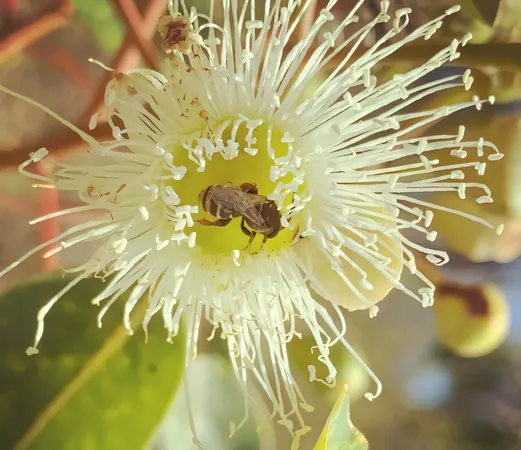
The Marri Tree: A Crucial Lifeline for Native Bees in Australia’s Biodiversity Hotspot
2024-10-23
Author: Ming
The Role of Marri Trees in Supporting Native Bees
In a groundbreaking study from Curtin University, researchers have unveiled the essential role that Marri trees play in supporting over 80 species of native bees in Western Australia’s South West region—one of the planet’s most biodiverse yet vulnerable environments.
Significance of Marri Trees
Dr. Kit Prendergast, the study's lead author and an Adjunct Research Fellow at the Curtin School of Molecular and Life Sciences, emphasized the Marri (Corymbia calophylla) tree’s significance, noting that it was classified as a “near threatened” species in 2019. This remarkable tree is a vital food source for native bees, especially during late summer when most other flora have ceased to blossom.
Findings of the Study
“Highlighting Marri’s importance, our findings reveal that these trees serve at least 81 different species of foraging bees in the region. They play an extraordinary role in sustaining native bee populations when food is scarce,” said Dr. Prendergast. “In this biodiversity hotspot, native bees thrive in incredible diversity, heavily relying on native plants, particularly the Marri.”
Nectar, Pollen, and Nesting Habitats
Marri trees provide a crucial combination of nectar and pollen at a time when few other plants are available, making them often the sole food source during dry spells. Moreover, these trees offer necessary nesting habitats as certain bee species have been observed nesting in the tree’s hollows and roots. Interestingly, the iconic red sap of the Marri is utilized by Megachilidae bees to seal their nests, showcasing the tree’s multi-faceted benefit to these pollinators.
Conservation Urgency
Dr. Prendergast underscored the importance of the Marri as a “keystone species” or “magnet species,” essential for preserving biodiversity. “This tree acts as a lifeline for native bees during critical times when other plants have withered away,” he stated.
Threats to Marri Trees
The study’s findings are a clarion call for the conservation of Marri trees, which face threats from logging, mining, wildfires, disease, and encroaching urban development. “Without the Marri, many native bees would face severe challenges to their survival,” cautioned Dr. Prendergast.
Conclusion
As this research highlights the Marri’s undeniable value, it serves as a wake-up call for preservation efforts to ensure that both the Marri trees and native bee populations continue to thrive in Western Australia’s rich ecosystems. Protecting this vital resource is not just about maintaining biodiversity; it's also about safeguarding an entire network of life that depends on it.




 Brasil (PT)
Brasil (PT)
 Canada (EN)
Canada (EN)
 Chile (ES)
Chile (ES)
 España (ES)
España (ES)
 France (FR)
France (FR)
 Hong Kong (EN)
Hong Kong (EN)
 Italia (IT)
Italia (IT)
 日本 (JA)
日本 (JA)
 Magyarország (HU)
Magyarország (HU)
 Norge (NO)
Norge (NO)
 Polska (PL)
Polska (PL)
 Schweiz (DE)
Schweiz (DE)
 Singapore (EN)
Singapore (EN)
 Sverige (SV)
Sverige (SV)
 Suomi (FI)
Suomi (FI)
 Türkiye (TR)
Türkiye (TR)